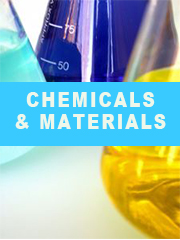Report overview
Nano-Copper particle is a copper-based particle 1 to 100 nm in size. Nano-copper is a purple-brown or purple-black powder. The copper atoms in nano-copper are the same as those in ordinary copper, but the nano-copper particles are very small, and the chemical properties are more active than ordinary copper. Nano copper has excellent characteristics such as large specific surface area, strong adsorption capacity and high surface activity.
This report aims to provide a comprehensive presentation of the global market for Nano-Copper Particles, with both quantitative and qualitative analysis, to help readers develop business/growth strategies, assess the market competitive situation, analyze their position in the current marketplace, and make informed business decisions regarding Nano-Copper Particles. This report contains market size and forecasts of Nano-Copper Particles in global, including the following market information:
Global Nano-Copper Particles Market Revenue, 2018-2023, 2024-2029, ($ millions)
Global Nano-Copper Particles Market Sales, 2018-2023, 2024-2029, (Tons)
Global top five Nano-Copper Particles companies in 2022 (%)
The global Nano-Copper Particles market was valued at US$ 11 million in 2022 and is projected to reach US$ 25 million by 2029, at a CAGR of 12.0% during the forecast period. The influence of COVID-19 and the Russia-Ukraine War were considered while estimating market sizes.
Nano-copper particles industry has a low level of market concentration, for top 4 companies only occupying about 25% of the global market. Global important companies in nano-copper particles includes Mitsui Kinzoku, QuantumSphere, Sumitomo Metal Mining and
Umcor. Geographically speaking, Japan is the largest producer of nano-copper particles, holds a share over 35%, followed by China, North America, and Europe.In a terms of type, the type of less than 50nm holds a share of nealy 55%, while the type between 50 and 100nm takes nearly 45%. In terms of application, microelectronic device takes a great percentage of over 55%.
We surveyed the Nano-Copper Particles manufacturers, suppliers, distributors and industry experts on this industry, involving the sales, revenue, demand, price change, product type, recent development and plan, industry trends, drivers, challenges, obstacles, and potential risks.
Total Market by Segment:
Global Nano-Copper Particles Market, by Type, 2018-2023, 2024-2029 ($ Millions) & (Tons)
Global Nano-Copper Particles Market Segment Percentages, by Type, 2022 (%)
Less Than 50nm
Between 50 and 100nm
Global Nano-Copper Particles Market, by Application, 2018-2023, 2024-2029 ($ Millions) & (Tons)
Global Nano-Copper Particles Market Segment Percentages, by Application, 2022 (%)
Microelectronic Device
Catalyst Industry
Surface Coating Materials
Others
Global Nano-Copper Particles Market, By Region and Country, 2018-2023, 2024-2029 ($ Millions) & (Tons)
Global Nano-Copper Particles Market Segment Percentages, By Region and Country, 2022 (%)
North America
US
Canada
Mexico
Europe
Germany
France
U.K.
Italy
Russia
Nordic Countries
Benelux
Rest of Europe
Asia
China
Japan
South Korea
Southeast Asia
India
Rest of Asia
South America
Brazil
Argentina
Rest of South America
Middle East & Africa
Turkey
Israel
Saudi Arabia
UAE
Rest of Middle East & Africa
Competitor Analysis
The report also provides analysis of leading market participants including:
Key companies Nano-Copper Particles revenues in global market, 2018-2023 (Estimated), ($ millions)
Key companies Nano-Copper Particles revenues share in global market, 2022 (%)
Key companies Nano-Copper Particles sales in global market, 2018-2023 (Estimated), (Tons)
Key companies Nano-Copper Particles sales share in global market, 2022 (%)
Further, the report presents profiles of competitors in the market, key players include:
Shoei Chemical
Umcor
Fulangshi
Mitsui Kinzoku
Sumitomo Metal Mining
Hongwu Material
Jiaozuo Banlv
QuantumSphere
American Elements
Nanoshel
Strem Chemicals
SkySpring Nanomaterials
Kinna Tech
Suzhou Canfuo Nanotechnology
Nanjing Emperor Nano Material
Outline of Major Chapters:
Chapter 1: Introduces the definition of Nano-Copper Particles, market overview.
Chapter 2: Global Nano-Copper Particles market size in revenue and volume.
Chapter 3: Detailed analysis of Nano-Copper Particles manufacturers competitive landscape, price, sales and revenue market share, latest development plan, merger, and acquisition information, etc.
Chapter 4: Provides the analysis of various market segments by type, covering the market size and development potential of each market segment, to help readers find the blue ocean market in different market segments.
Chapter 5: Provides the analysis of various market segments by application, covering the market size and development potential of each market segment, to help readers find the blue ocean market in different downstream markets.
Chapter 6: Sales of Nano-Copper Particles in regional level and country level. It provides a quantitative analysis of the market size and development potential of each region and its main countries and introduces the market development, future development prospects, market space of each country in the world.
Chapter 7: Provides profiles of key players, introducing the basic situation of the main companies in the market in detail, including product sales, revenue, price, gross margin, product introduction, recent development, etc.
Chapter 8: Global Nano-Copper Particles capacity by region & country.
Chapter 9: Introduces the market dynamics, latest developments of the market, the driving factors and restrictive factors of the market, the challenges and risks faced by manufacturers in the industry, and the analysis of relevant policies in the industry.
Chapter 10: Analysis of industrial chain, including the upstream and downstream of the industry.
Chapter 11: The main points and conclusions of the report.
